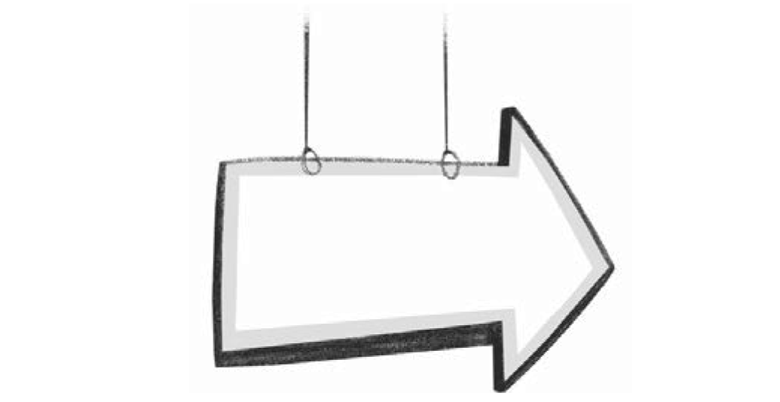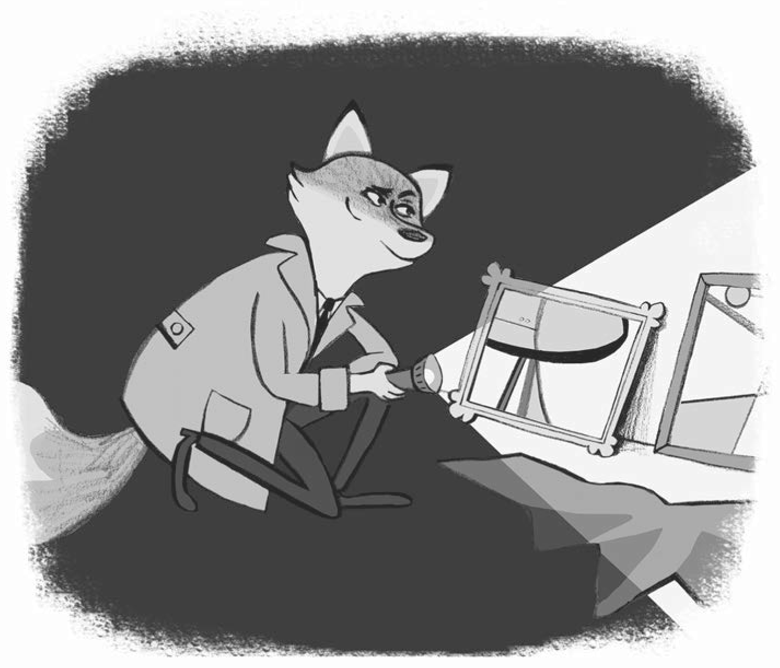As he fell, watching the metal girders of the Eiffel Tower whizz past, Wily remembered something. Albert had adapted the Vespa so it would come when he whistled.
Wily tried to whistle, but the air rushing past his mouth made his lips jiggle. He tried to whistle again, glancing down at the ground that was rapidly hurtling towards him. A tiny peep came out of his lips, but no Vespa appeared.
In desperation, Wily put two fingers in his mouth and gave the loudest possible fox-whistle (like a wolf-whistle, but even more ear-piercing). In an alley fifty metres away, the Vespa’s rocket roared into life. It shot through the air and caught the fox just before he hit the ground. Wily lay back on the seat, gasping and shuddering, while the Vespa floated in mid-air, waiting for further instructions.

A few seconds passed. Two pigeons hovered next to the detective’s head.
“Look, Pierre,” one of the pigeons quipped. “A flying fox.”
“Hilarious,” Wily growled and sat up. He flew the Vespa through the legs of the Eiffel Tower and parked.
He looked up at the sky. The helicopter was gone. He looked at the street. The taxi – with Dimitri and the painting – was gone.
But he was still alive. And now he realized he was something else, too.
Annoyed. Very annoyed.
Wily tapped the screen and Albert appeared. Behind him was a gigantic shelf of books.
“Albert,” said Wily, “where are you?”
“In the library,” said Albert. “I can’t find a single reference to Kandogski. Or a single painting by him, either.”
“Hmm, interesting… And there’s something else,” said Wily. “I think an old friend of mine might be behind all this.”
He showed the photograph he’d found in Dimitri’s office to Albert and explained that the animals were his classmates at detective school.
“Albert,” said Wily, “I need you to crossreference all the people in this photo to the handwriting up here. Where it says, ‘This one’s Wily Fox’.”
“OK,” said the mole. “Slide it across the face of the screen.”
Wily did this, and an exact copy emerged from the side of the tablet that Albert was holding.
“Find out which one of these animals wrote that message,” said Wily.
“Will do,” said Albert.
“And now I need to find out why they wrote it,” said Wily.
“Be careful, Wily,” said Albert.
The screen went black.
Wily pulled out the third piece of paper he had found in Dimitri’s office.

“I think it’s time to pay Gallery Nouvelle a visit,” Wily said aloud.
He drove to the old docks, taking back streets and side roads, so he would know if he was being followed.
When he got there, a sign pointed right to Gallery Nouvelle.

But shortly after Wily turned right, a strange thing happened – the road ran out.
Wily looked in front of him. Gallery Nouvelle seemed to be on an island linked to the mainland by a moveable bridge. The bridge was up and a gruff-looking goat was standing in front of it.

Who would want to stop anyone getting to their gallery? Wily thought to himself.
He considered swimming across to the island, but the water looked murky and the current seemed strong. Then he glanced down at his Vespa and remembered – it couldn’t just fly…
The goat heard the splash and glanced round. But Wily and his Vespa had already vanished. As soon as it hit the water, a Perspex bubble shot out of the front, the screen on the handlebars flipped over and a giant propeller popped out of the back. The Vespa had become a submarine.
Wily steered it carefully towards the island. When he got close, he pressed a blue button on the dashboard and a periscope whirred up from the handlebars.

It was early evening now. As Wily peered through the periscope, he could see no signs of life in the gallery. All the lights were off, and all the doors and windows were closed.
He drove the Vespa towards the edge of the island and, just before he hit dry land, he pressed a button. The Vespa crunched and clanked, rising up through the water, and Wily emerged riding a scooter again, as if he’d never been underwater at all.
The detective took a torch out of the Vespa’s top box and walked towards the gallery. He glanced around, looking for security guards. There didn’t seem to be any – just a high fence with barbed wire along the top.
Wily bit through the fencing with one huge chomp of his sharp teeth and crawled through the hole he had made. Then he slunk across to the gallery.
The door was locked but, with the help of a hairpin from his inside pocket, he picked the lock in less than three seconds.
“A personal best,” he muttered.
Once inside, Wily turned on his torch. He could see square shapes on each of the walls. He guessed they were paintings. He could see weird objects in the middle of the floor. He guessed they were pieces of sculpture.

Now all he had to do was find the Kandogski. Wily moved across to the nearest wall and shone his torch on the first square shape. Strange. It wasn’t a painting at all. In fact, it seemed to be a signed photograph of the French football team. He shone his torch on the next square. But that wasn’t a painting, either. It was a calendar with a different racing car for each month. The next square was a list of names on a whiteboard.
Wily shone his torch round the entire room and realized that this wasn’t an art gallery. The shapes he had seen were not paintings and sculptures. They were car engines and noticeboards and workbenches and spanners and screwdrivers and tyres.
This was a garage.
Why would anyone send a painting to a garage? And why was this garage on an island behind a barbed-wire fence?
Wily looked around for other clues. He shone his torch on the workbench and saw a note. It was written in the same handwriting that he had seen on the photo of his old classmates:

“You have the first two,” Wily murmured. “That must mean the first two paintings. So they’re here. Somewhere.”
The detective looked around the garage again and saw a large shape under a brown cloth.
He crossed the room and lifted up the cloth. There were two paintings underneath. They were in the same unusual style as Suzie La Pooch’s Kandogski.

Wily quickly took a photo and emailed it to Albert. He needed to think. He needed to think hard. Instead, the phone went.
The detective froze. Mounted on the wall was a large red telephone. He glanced round – was there a guard on duty? Was someone going to emerge, half asleep, from a side room?
After five rings, nobody had appeared.
Wily went over and picked up the phone. He held his mobile against the receiver, so he could record the whole conversation.
There was silence on the other end of the line.
Putting on his best French accent, Wily said, “Bonjour!”
There was more silence. Then a voice said, “Paris will not work.”
The voice had been put through a scrambler – it was impossible to work out the age or gender of who was talking.

There was a click and the line went dead.
Wily put the phone back on the hook. This case was becoming stranger by the second. Then his mobile buzzed. It was Suzie.
“Wily,” she said. “I’ve just been arrested.”
